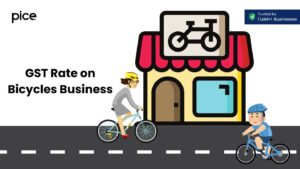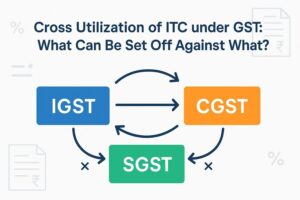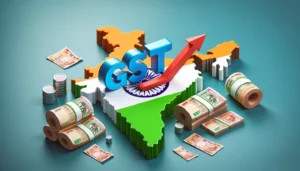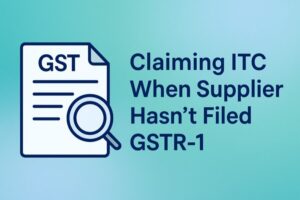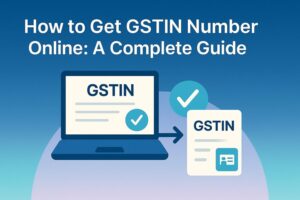GST: Full Form, Types, Rates, Registration and Process
- 29 Aug 24
- 12 mins

GST: Full Form, Types, Rates, Registration and Process
Key Takeaways
- GST Overview: Goods and Services Tax (GST) unifies multiple taxes into a single system.
- Types of GST: Includes Integrated GST (IGST), State GST (SGST), Central GST (CGST), and Union Territory GST (UTGST).
- GST Rates: Four tax rate slabs: 5%, 12%, 18%, and 28%.GST Registration: Mandatory for businesses with annual turnover over ₹40 lakh.
- GST Exemptions: Basic foods, agricultural tools, and essential services are GST-exempt.
The Government of India introduced the Goods and Service Tax Act on 1st July 2017, to simplify the tax collection process as well as streamline the tax payment process of venture owners. This rate of GST was consistent across all the taxable individuals and varied only with the type of goods and services.
If you are a venture owner and want to understand the meaning of GST, types of GST, different GST rates associated and other crucial details, read along.
What Is GST in India?
Goods and Services Tax or GST is an indirect tax regime that the government introduced to combine various taxes. These taxes include service tax, entertainment tax, Value-Added Tax (VAT), luxury tax, excise duty and other indirect taxes. Every taxpayer involved in the supply of goods and taxes has to file GST returns mandatorily.
GST functions as a multi-stage, comprehensive and destination-based tax that the registered individuals have to pay for every value addition. However, it simplifies tax payments as eligible individuals will have to pay only one indirect domestic tax on goods transactions.
How Many Types of GST Are There in India?
There are several variants of indirect taxes in the form of GST, available in India. These types include:
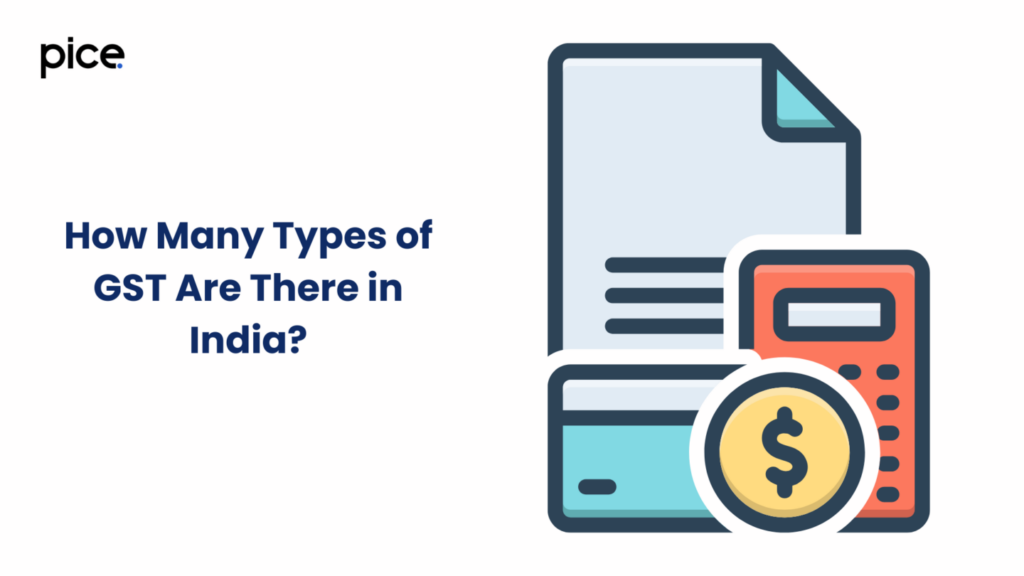
- Based on the Government Collecting Taxes
- Integrated Goods and Services Tax or IGST
- State Goods and Services Tax or SGST
- Central Goods and Services Tax or CGST
- Union Territory Goods and Services Tax or UTGST
- Based on the Transportation of Goods
- Interstate supply of goods
- Intrastate supply of goods
Components of GST and Its Explanation
There are usually 4 types of GST available depending on the government that is responsible for collecting the tax. These types include:
- Integrated Goods and Services Tax or IGST
This is a type of GST that the government levies on the exports, imports and inter-state movement of goods. Usually, people have to pay this type of tax compliance to the Central Government during the interstate transaction of goods. In the case of IGST, the tax paid is equally distributed between the Central and the State Governments unlike the different other variants of GST available.
- State Goods and Services Tax or SGST
As the name suggests, in the case of SGST, the State Government is responsible for collecting tax from the registered individuals. However, people only have to pay this tax on the intra-state movement of services or commodities. Only the State Government has the flexibility to use the money collected from the SGST paid by taxable people. Nonetheless, numerous SGSTs were included with the CGST, to simplify the tax structures for regular taxpayers.
- Central Goods and Services Tax or CGST
The central sales tax is collected by the Central Government and is somewhat similar to SGST. It is so because this GST type is also levied on intrastate transactions. All business owners must mandatorily file the CGST returns regularly. Moreover, they must mention all their intrastate transactions when filing the GST. For example, if the GST rate applicable on the transaction of a good is 18%, the amount is divided between CGST and SGST at 9% each.
- Union Territory Goods and Services Tax or UTGST
The government levies UTGST on the supply of services and goods to the Union Territories. So, venture owners residing in Dadra Nagar Haveli, Chandigarh, Andaman and Nicobar Islands, Daman Diu, and Lakshadweep will have to pay UTGST to the government of the Union Territory.
Types of GST Tax
There are also different variants of GST based on the transportation of goods and services. These have been divided such that there is an equitable tax distribution between State and Central Governments. The different types of GST available include:
- Inter-State Transactions
The inter-state supplies involve 2 different states wherein the Central Government collects GST from taxpayers in the form of IGST. After that, they divide the tax amount proportionately between the respective State Government and Central Government.
- Intra-State Transactions
The intra-state supplies usually take place within a particular state. Hence, the tax that a person pays is equally divided between the State and Central Government in the form of SGST and CGST.
What Are the Different Rates of GST on Goods and Services?
Different goods are categorised under different GST rates. Currently, there are 4 GST tax rate slabs, 5%, 12%, 18%, and 28%, other than the nil-rated category. Different goods available under various GST regimes include:
- Goods and services available at 5% GST
- Tea and sugar
- Hearing aids
- Milk food items for babies
- Radio/App-based Taxis
- Indian sweets
- Economy-class flight and Railway tickets
- Goods and services available at 12% GST
- Mobile phones and computers
- Packaged Ghee
- Condensed Milk
- Fruit Pulp-based drinks
- Fruit juices
- Business class flight tickets
- Preserved fruits
- Preserved vegetables
- Goods and services available at 18% GST
- Mineral water
- Toothpaste
- Cornflakes
- Pasta
- Hair oils
- Computer Monitors
- Life Insurance
- Health Insurance
- Goods and services available at 28% GST
- Caffeinated Beverages
- Air Conditioners
- Passenger Cars
- Cigars and Cigarettes
- Dish Washing Machines
- Pan Masala
- Aluminous Cement
- Slag
- Portland
What Is GST Registration?
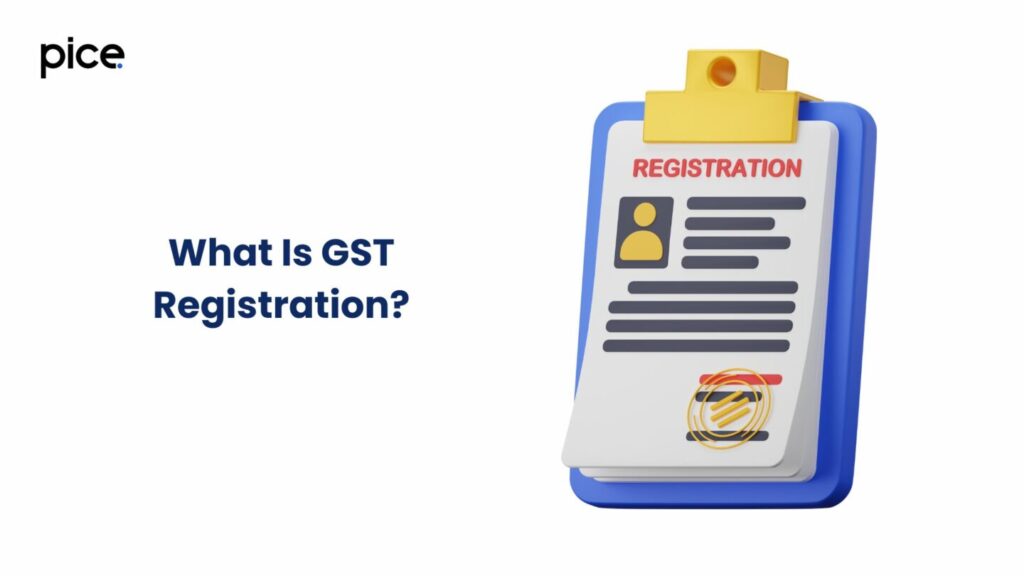
GST registration comprises a series of steps wherein the taxpayer must register under GST. After the successful registration of their venture, they will receive a Goods and Services Tax Identification Number (GSTIN). The GSTIN is a unique 15-digit registration number that the Central Government assigns to taxpayers after registration.
GST registration is mandatory for ventures with an annual turnover of more than ₹40 lakhs. Or else, if they do not comply with this mandate, they might face severe legal actions. Generally, the registration process is simple and can be conducted completely online by following some hassle-free steps.
How to Register for GST?
The GST registration process can be done online by filling out a form. The form is usually divided into two parts – Part A and Part B.
- Part A Form Fill-up Process
Following are some simple steps that you need for GST registration online:
Step 1: Move to the official portal of GST and click on ‘Services’.
Step 2: Next, click on the ‘Registration’ tab and select the ‘New Registration’ button.
Step 3: The registration form appears on your screen, wherein you will need to enter details like state, district, name of business, PAN of business, etc.
Step 4: After that, enter your mobile number and email ID and click on ‘Proceed’.
Step 5: Once done, you will receive an OTP on your mobile number or email ID that is linked with the PAN of the business.
Step 6: Enter the OTP accurately and click on ‘Continue’.
Step 7: After that, you will receive a 15-digit Temporary Reference Number (TRN) on your mobile number or email ID. Keep a note of it for future reference.
Step 8: Reopen the GST portal and move to the ‘New Registration’ tab.
Step 9: Choose the TRN option and enter the 15 digits accurately.
Step 10: After that, enter the captcha code visible on your screen and tap on proceed.
Step 11: Next, input the OTP received on your registered mobile number.
Step 12: Once done, the status of your application will appear as a draft on your screen.
Step 13: Click on the ‘Edit’ icon available on the screen to proceed with filling up part B of the GST registration form.
- Part B Form Fill-up Process
There are 10 sections in the GST registration form, Part B, that you will need to fill out. These include:
- Business details
- Partner details
- Authorised signatory
- Authorised representative
- Principal place of business
- Additional place of business
- Goods and services available
- State-specific information
- Aadhar authentication
- Verification of the information entered
Documents for Online GST Registration Process
Following are some essential documents that you must keep ready and submit as and when required. These include:
- PAN card of the applicant
- Proof of business registration
- Aadhaar card copy
- Incorporation certificate
- Identity and address proof of directors
- Digital signature of the stakeholders
- Cancelled cheque or bank account details
- Authorisation letter
- Photographs of directors
You should note that there might be some additional that you might have to submit based on various factors like the type of venture, belonging to an HUL, partnerships, LLPs, societies, clubs and so on.
Who Is Liable to Pay GST?
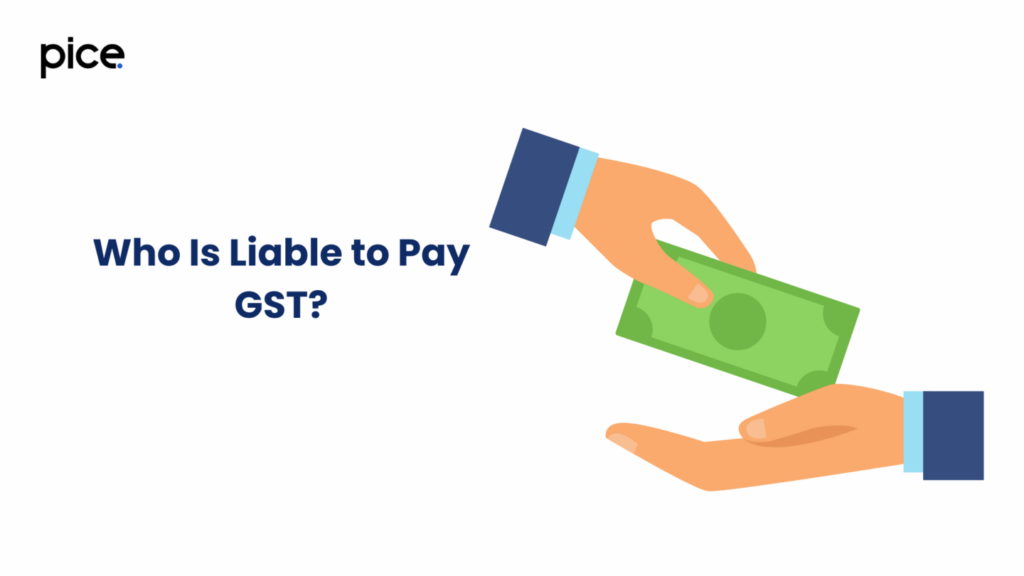
Following are some entities that need to pay GST regularly to run their venture smoothly:
- Venture owners with businesses having an annual turnover of ₹40 lakh
- Product-based companies with the need for interstate transportation of goods
- People who qualify for tax deductions under Section 37 of the Income Tax Act
- NRIs who are eligible to pay taxes in India
- People have to pay taxes under reverse charge
- Distributors of input services
- Individuals who are responsible for providing services on behalf of another registered taxpayer
- Various e-commerce operators
- Other individuals who have been specifically appointed by the central or the state government to pay taxes.
Goods Exempted from GST Payment
The following is a list of GST-exempted goods that can save you from having to pay additional taxes:
- Foods – cereals, vegetables, edible fruits, edible tubers and roots, meat, fish, tender coconut, coffee beans, tea leaves, turmeric, seeds, ginger, betel leaves, flour, papad, aquatic feeds, and supplements, curd, milk, lassi and buttermilk.
- Instruments – hearing aids, agricultural tools, hand tools, handmade musical instruments and implements and aids used by physically challenged people.
- Miscellaneous – maps, books, newspapers, journals, postal items, non-judicial stamps, live animals, human blood, beehives, bangles, semen, human blood, chalk sticks, earthen pots, pooja use items, organic manure, vaccines and kites.
Apart from these goods, there are various services as well. These include:
- Agricultural services – cultivation, supply of farm labour, harvesting, fumigation, packaging, warehouse activities, renting or leasing of machinery for agricultural purposes, services by an Agricultural Produce Marketing Committee or Board during purchase and sale of goods.
- Transportation services – transportation of goods by inland waterways, transportation of passengers by air in certain Indian cities, transportation of goods by road, on payment of toll, transportation by non-AC horse, transportation of goods costing less than ₹1,500, transportation of milk, agricultural products, newspapers, salt, or woodgrains and services provided to goods transport agencies.
- Government and diplomatic missionary services - services provided by foreign diplomatic missions located in India, services offered by RBI, services provided to diplomats, services by the Government or any local authority, life insurance for Army, Air Force, and Naval Groups, and life insurance under NPS.
- Educational services - mid-day meal catering services, transportation of faculty and students, examination services, security, admission, housekeeping services, services provided by Indian Institutes of Management, and coaching services from NGOs and institutions under the ‘Scholarships for Students with Disabilities’ scheme.
- Judicial services – services provided by an arbitral tribunal, services offered by a law partnership firm and services provided by a senior advocate.
- Medical services – services offered by a veterinary clinic, services provided by ambulances, health-care services, services by organisations facilitating religious pilgrimage and charities.
- Services provided by organisers – organisers conducting business exhibitions outside India and tour operators offering to foreign tourists.
- Miscellaneous services – electricity transmission and distribution by authorised personnel, services provided by journalists, Press Trust of India or United News of India, services provided by libraries, services provided by slaughterhouses, services provided by recognised sports bodies, overloading charges at a toll plaza, renting out vehicles by State Transport Undertakings and Local Authorities, services provided for public conveniences and conduction of religious ceremonies.
Conclusion
Now that you are aware of the types of GST present, GST rates applicable on different items, and the registration process, you can file GST on time. Doing so ensures that you comply with all the GST laws applicable. Thus, staying protected from severe legal actions as well as from tax burden.
However, before proceeding, check the GSTR that you will need to file along with its frequency to never miss out on the due dates present.
💡Facing delays in GST payment? Get started with PICE today and streamline your GST payments. Click here to sign up and take the first step towards hassle-free GST management.
 By
By 





